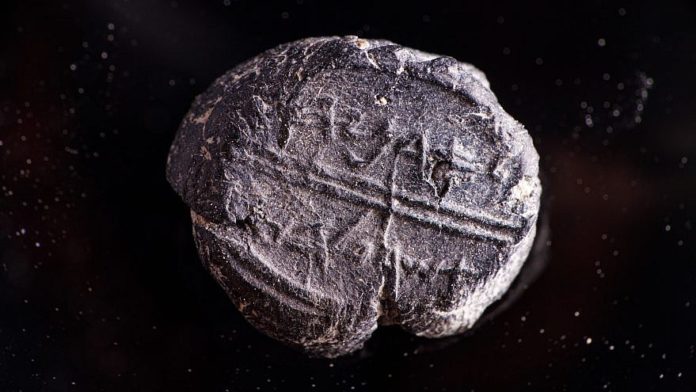
A 2,600-year old bulla (seal) bearing a Hebrew name was uncovered recently in earth excavated in 2013 from beneath Robinson’s Arch at the foundations of the Kosel in the Old City of Yerushalayim. The seal bears not only a name but also a role—the most prominent in the courts of the kings of Yehuda and Yisrael.
The seal, which was used to sign documents, bears the Hebrew name and title “Adoniyahu Asher Al Habayit,” which literally translates as “Adoniyahu, who is over the house.” The term, which means “royal steward,” is used throughout Tanach to describe the most senior official serving under a king of Yehuda and Yisrael.
According to archaeologist Eli Shukron, who conducted the initial excavations on behalf of the Israel Antiquities Authority just north of the City of David at the foundation stones of the Kosel, “This is the first time this kind of archaeological discovery has been made in Jerusalem. The biblical title ‘Asher Al Habayit’ was the highest ranking ministerial position beneath the king during the reigns of the kings of Judea and Israel.”
As small as it is, the seal is of tremendous significance, said Doron Spielman, vice-president of the City of David Foundation, which operates the site where the seal was discovered as well as the Archeological Experience, where it was uncovered.
“This tiny bulla has immense meaning to billions of people worldwide—the personal signet of a senior official to a biblical king from the First Temple period. This is another link in the long chain of Jewish history in Jerusalem that is being uncovered and preserved at the City of David on a daily basis,” said Spielman.
The seal is approximately one centimeter (two-fifths of an inch) wide, and according to the writing on it dates to the seventh century BCE—the period of the Kingdom of Yehuda.
The term “Asher Al Habayit” appears for the first time in the list of King Solomon’s ministers. This role is mentioned in Tanach in reference to a number of figures, all of whom had considerable influence in the kingdom.
For example, “Ovadyahu Asher Al Habayit” is mentioned in Melachim I as having served in that role in the Kingdom of Yisrael under King Ahab during times of the Eliyahu Hanavi. Ovadyahu acted against Isabel in administering the kingdom and even saved 100 Israelite nevi’im by hiding them in a cave.
French archeologist Charles Clermont-Ganneau discovered a burial cave with the inscription: “Tomb of …yahu Asher Al Habayit” some 150 years ago. The beginning of the name had been erased, but the burial site, on the outskirts of the City of David, were also dated to the seventh century BCE. Although discovered by Clermont-Ganneau, the inscription was only deciphered by Prof. Nachman Avigad some 80 years later.
(JNS)
{Matzav.com}











